

If you’re looking for inspiration for your next hairstyle, look no further than China. With a rich and diverse historical culture, China offers a wide variety of hairstyles ranging from the elegant and sophisticated to the more casual and relaxed.
Chinese hairstyles are known for their beauty and complexity. Many of them use braiding and tangling techniques to create unique and detailed shapes.
In this article, we will explore some of the most popular hairstyles in China, from the classic and traditional to the more modern and cutting-edge. Find out how to achieve these looks and how to adapt them to your own style. Read on to get inspired by the most beautiful hairstyles in China!
The 10 Most Popular Traditional Hairstyles in China
Chinese culture is characterized by its unique traditions and customs, including hairstyles. Some of the most popular and ancient hairstyles in China are:
Qixi Hairstyle
This hairstyle was worn in the Tang Dynasty and is characterized by an embellished high bun and two long side braids.
Jiafa Hairstyle
This hairstyle was worn in the Han Dynasty and features two embellished side chignons and a long braid in the middle.
Longtu Hairstyle
This hairstyle was worn in the Song Dynasty and is characterized by a high bun and a long braid down the back.
Toushi Hairstyle
This hairstyle was worn in the Ming Dynasty and is characterized by a low bun with two side decorations and a long braid in the back.
Gongting Hairstyle
This hairstyle was worn in the Qing Dynasty and is characterized by a high bun and two long, embellished side braids.
Yiduo hairstyle
This hairstyle was worn in the Ming Dynasty and is characterized by a high bun with a long braid on the back and small side braids.
Lantian Hairstyle
This hairstyle was worn in the Tang Dynasty and is characterized by a high bun and two embellished side braids.
Jiugong Hairstyle
This hairstyle was worn in the Tang Dynasty and is characterized by an embellished high bun and a long braid down the back.
Fengguan Hairstyle
This hairstyle was worn in the Tang Dynasty and is characterized by a high bun and two embellished side braids.
Zhao Jun Hairstyle
This hairstyle was worn in the Han Dynasty and features two embellished side chignons and a long braid down the back.
How to do a Chinese braid step by step
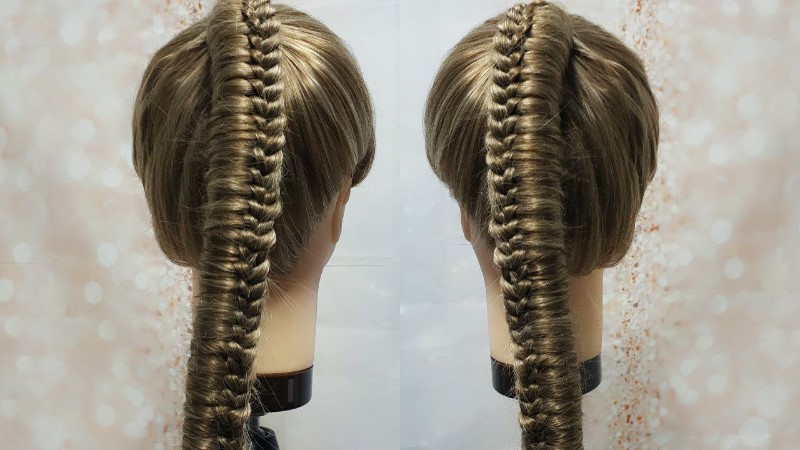
Braids are one of the most popular hairstyles in the world, and the Chinese braid is particularly beautiful and elegant. It is a perfect hairstyle for any occasion, from weddings to everyday. Here we show you how to do a Chinese braid step by step:
Necessary materials
Before you start making the braid, you need to have some materials on hand. These include a hairbrush, some hair clips, some hair bands, and some hairspray.
Step 1: Wash and dry
Wash your hair and dry it well before beginning to braid. This will ensure that your hair is clean and manageable during the styling process.
Step 2: Part the hair
Divide your hair into three equal sections, making sure that each section is the same thickness.
Step 3: Braid the hair
Begin braiding the hair, holding the center section in one hand and moving the left and right sections over the center section. He continues braiding your hair all the way to the end, making sure the braid is tight and secure at all times.
Step 4: Adjustment and fixation
Once you’ve finished making the braid, adjust it by gently tugging on each section so it’s symmetrical. Secure the braid with a hair band and apply some hairspray to keep it in place.
And ready! You now have a beautiful Chinese braid that you can proudly display.
Modern hairstyles inspired by Chinese culture
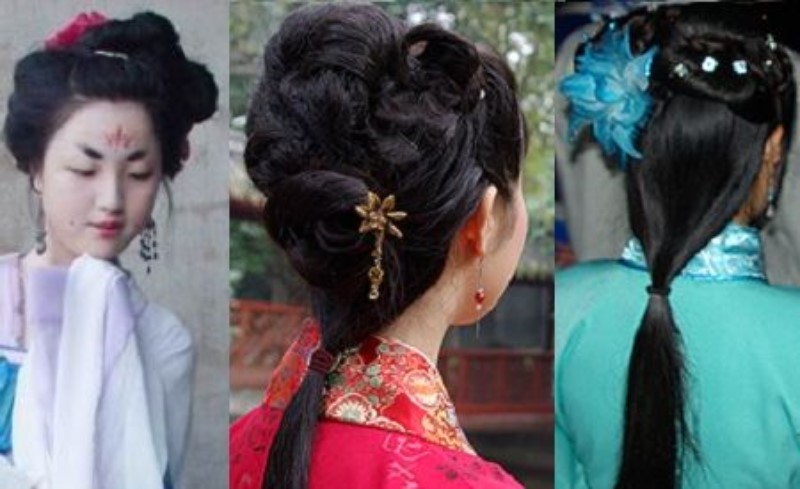
Chinese culture offers us a wealth of hair styles and trends that can inspire new modern hairstyles, from simple cuts to more elaborate combinations of traditional and avant-garde styles. Here are some modern hairstyle ideas inspired by Chinese culture:
Asymmetrical bob cut with long bangs
The asymmetrical bob is a very popular style in today’s fashion, which can be adapted to Chinese culture by incorporating long, straight bangs that fall just above the eyebrows. This look is ideal for highlighting the beauty of oriental facial features, and is very easy to maintain with brushing or air drying.
Chinese style updo with pearl accessories
An elegant updo with pearl accessories can be an excellent option for a special occasion such as a wedding or a formal dinner. This style can be achieved with a low bun and long side bangs, which are adorned with delicate pearls or lotus flowers. You can also add braids or Chinese knots to add more texture and elegance.
In short, modern hairstyles inspired by Chinese culture offer a wide variety of options to experiment and show off a unique and original look.
The Meaning Behind Tang Dynasty Hairstyles in China
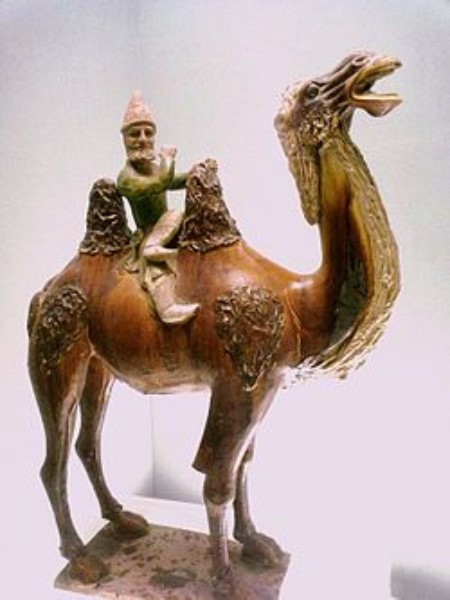
The Tang dynasty was a time of great cultural splendor in China, and hairstyles were an important part of this. There were many different hairstyles worn during this era, and each had its own meaning and symbolism.
The Tianzi Hairstyle
The Tianzi hairstyle was one of the most popular during the Tang dynasty, and is said to have been created by Empress Wu Zetian. This hairstyle consisted of a high, rounded bun on top of the head, resembling a “square sky.” This hairstyle symbolized power and authority, and was worn only by the empress, imperial concubines, and princesses.
shangdu hairstyle
The Shangdu hairstyle was an elegant and sophisticated hairstyle that was mainly worn on formal and ceremonial occasions. It consisted of a low elegant chignon at the back of the head, decorated with a flower or a brooch. This hairstyle symbolized elegance and feminine beauty.
The Lantian Hairstyle
The Lantian hairstyle was a popular hairstyle for middle-class women during the Tang Dynasty. It consisted of a low, rounded chignon at the back of the head, with a fabric trim at the top. This hairstyle symbolized modesty and sweetness.
Tang dynasty hairstyles were much more than just hair styles. Each hairstyle had its own meaning and symbolism, and was an expression of the culture and society of the time.
Chinese wedding hairstyles: ideas and trends
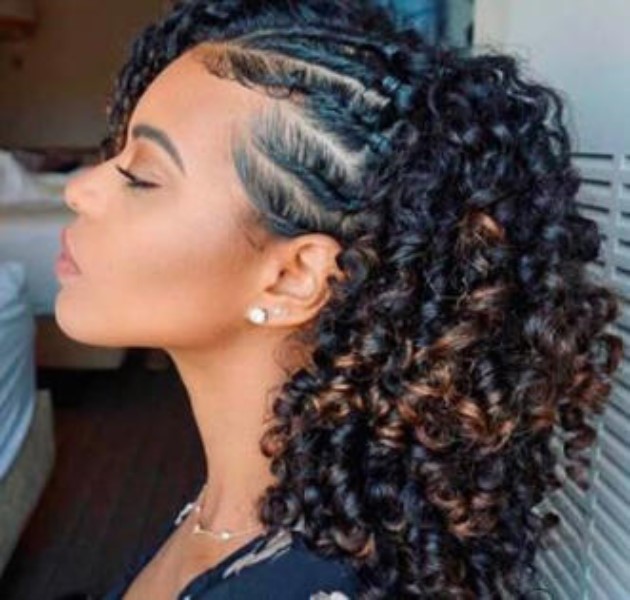
The wedding day is a very important time in Chinese culture and the bride’s hairstyle is a crucial part of the wedding attire. Here are some Chinese bridal hairstyle ideas and trends:
traditional hairstyles
Traditional Chinese bridal hairstyles include the dragon braid, cloud bun, and corsage hairstyle. These hairstyles have symbolic meaning in Chinese culture and are often decorated with accessories such as flowers, hairpins, and gold earrings.
modern hairstyles
Modern hairstyles for Chinese brides include the soft wave hairstyle, the fishtail hairstyle, and the loose hair hairstyle. These hairstyles are simpler and more elegant compared to the traditional ones, but still incorporate cultural elements such as red flowers, which symbolize good fortune.
Hair Accessories
Hair accessories are an important part of the Chinese bride’s hairstyle. Popular accessories include gold and silver hairpins, jade and pearl inlaid combs, and silk and paper flowers. The colors red and gold are significant in Chinese culture and are frequently used in bridal hair accessories.
Be sure to choose a hairstyle that reflects your personal style and culture. Consider traditional and modern ways when planning your wedding hairstyle. With so many options available, you’re sure to find the perfect hairstyle for your big day.
Hairstyles in the era of imperial China
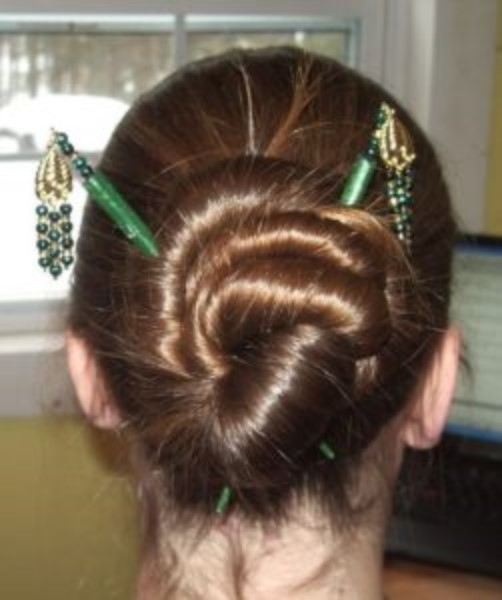
Hairstyles in the era of imperial China reflected not only the fashion of the time, but also the status and social position of the person. Men used to wear their hair long, tied up in a high bun and held in place with a jade hairpin, while women wore elaborate hairstyles with ornaments such as flowers, pins, and decorative combs.
Concubines hairstyles
Concubines in Imperial China wore very elaborate and distinctive hairstyles, including braids, curls, and chignons adorned with jewels and beads. These hairstyles were a way to show their beauty and social status, although they could also reflect the emperor’s favor or disapproval.
The obligatory haircut
During the Qing dynasty, the empress dowager ordered all men at court to cut their hair short, as a show of submission and loyalty to the emperor. This order was very unpopular with the men, and many of them resisted cutting their hair, leading to a series of rebellions and conflicts across the country.
Long hair in Chinese culture: tips and care
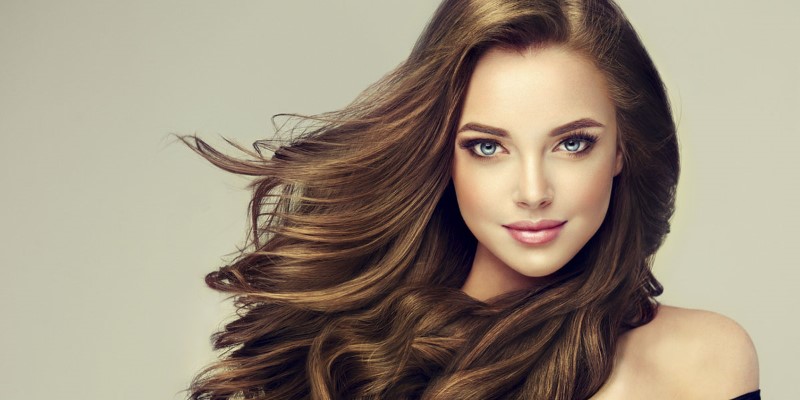
Tips for caring for long hair in Chinese culture
Long hair is an important part of Chinese culture and therefore requires special care. Here are some tips:
- Wash your hair with a mild shampoo: Avoid using products that contain harsh chemicals, as they can damage your hair and scalp.
- Moisturize your hair: use conditioners and moisturizing treatments to keep your hair soft and silky.
- Protect your hair from the sun: wear hats or bandanas to protect your hair from UV rays.
- Detangle your hair carefully: use a wide-tooth comb and detangle from the ends to the roots to avoid breaking the hair.
Tips to grow long hair in Chinese culture
Here are some tips to grow your hair long and healthy:
- Eat a healthy diet: Eat foods rich in vitamins and minerals, such as fruits, vegetables, fish, and nuts.
- Avoid stress: stress can cause hair loss, so try to stay calm in stressful situations.
- Trim the ends regularly: this will help prevent split ends and brittle hair.
- Avoid excessive use of styling tools: Excessive heat from blow dryers, flat irons, and curling irons can damage hair and cause it to break.
With these tips, you’ll be able to keep your hair long and healthy, an essential feature of Chinese culture.
